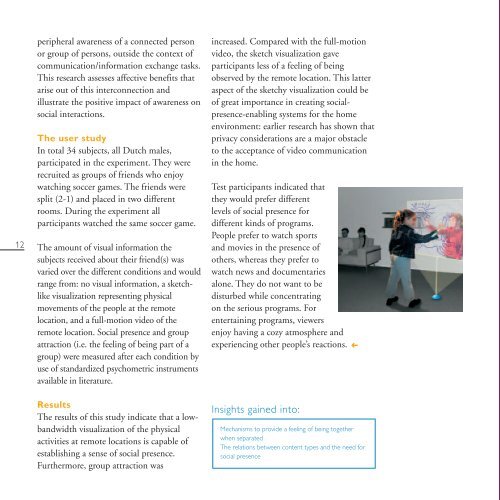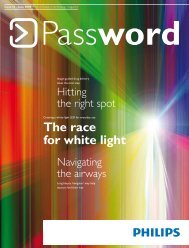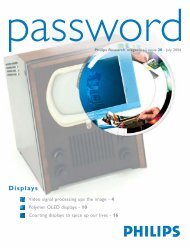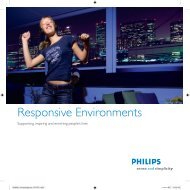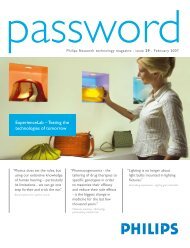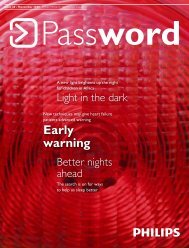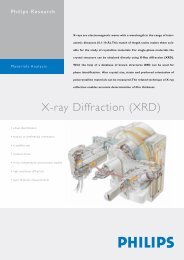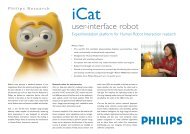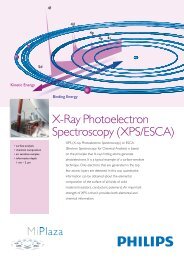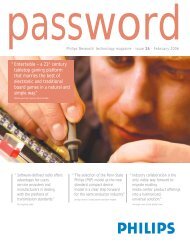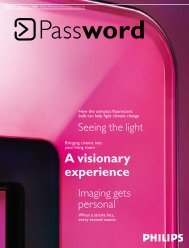365 DAYS AMBIENT INTELLIGENCE IN HOMELAB - Philips Research
365 DAYS AMBIENT INTELLIGENCE IN HOMELAB - Philips Research
365 DAYS AMBIENT INTELLIGENCE IN HOMELAB - Philips Research
Create successful ePaper yourself
Turn your PDF publications into a flip-book with our unique Google optimized e-Paper software.
Ambient 05-05-2003 12:37 Pagina 12<br />
12<br />
peripheral awareness of a connected person<br />
or group of persons, outside the context of<br />
communication/information exchange tasks.<br />
This research assesses affective benefits that<br />
arise out of this interconnection and<br />
illustrate the positive impact of awareness on<br />
social interactions.<br />
The user study<br />
In total 34 subjects, all Dutch males,<br />
participated in the experiment. They were<br />
recruited as groups of friends who enjoy<br />
watching soccer games. The friends were<br />
split (2-1) and placed in two different<br />
rooms. During the experiment all<br />
participants watched the same soccer game.<br />
The amount of visual information the<br />
subjects received about their friend(s) was<br />
varied over the different conditions and would<br />
range from: no visual information, a sketchlike<br />
visualization representing physical<br />
movements of the people at the remote<br />
location, and a full-motion video of the<br />
remote location. Social presence and group<br />
attraction (i.e. the feeling of being part of a<br />
group) were measured after each condition by<br />
use of standardized psychometric instruments<br />
available in literature.<br />
Results<br />
The results of this study indicate that a lowbandwidth<br />
visualization of the physical<br />
activities at remote locations is capable of<br />
establishing a sense of social presence.<br />
Furthermore, group attraction was<br />
increased. Compared with the full-motion<br />
video, the sketch visualization gave<br />
participants less of a feeling of being<br />
observed by the remote location. This latter<br />
aspect of the sketchy visualization could be<br />
of great importance in creating socialpresence-enabling<br />
systems for the home<br />
environment: earlier research has shown that<br />
privacy considerations are a major obstacle<br />
to the acceptance of video communication<br />
in the home.<br />
Test participants indicated that<br />
they would prefer different<br />
levels of social presence for<br />
different kinds of programs.<br />
People prefer to watch sports<br />
and movies in the presence of<br />
others, whereas they prefer to<br />
watch news and documentaries<br />
alone. They do not want to be<br />
disturbed while concentrating<br />
on the serious programs. For<br />
entertaining programs, viewers<br />
enjoy having a cozy atmosphere and<br />
experiencing other people’s reactions.<br />
Insights gained into:<br />
Mechanisms to provide a feeling of being together<br />
when separated<br />
The relations between content types and the need for<br />
social presence<br />
➜


